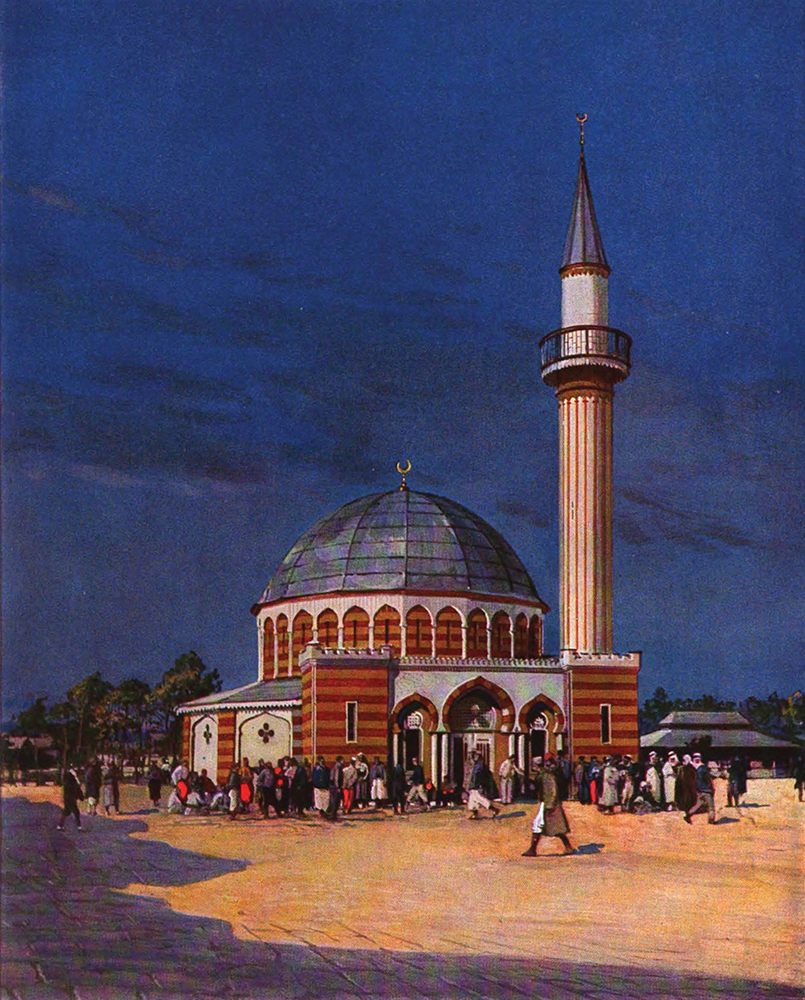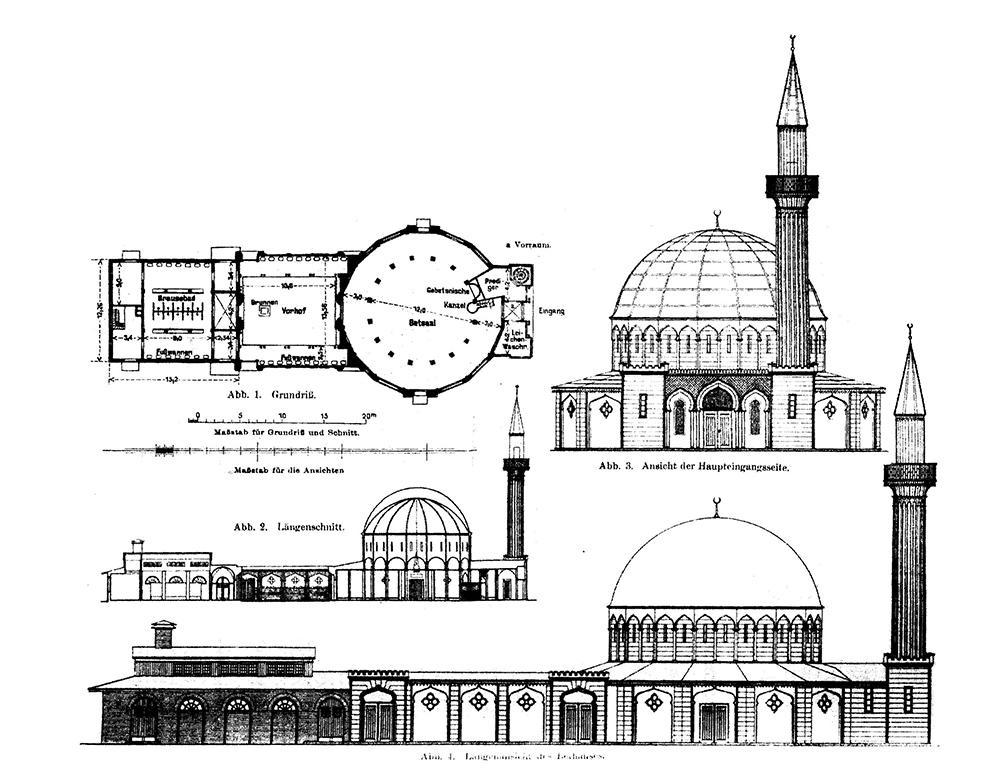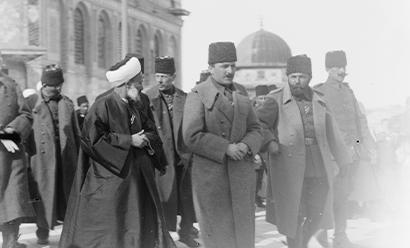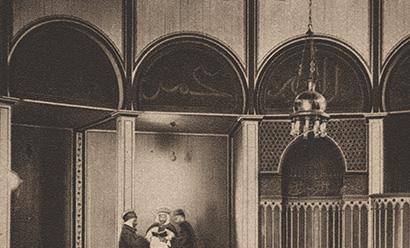
Illustration from Die Kriegsgefangenen in Deutschland, Siegen, 1915. Germany.
The Mosque ›
Gift of the Kaiser
From the beginning of the Half Moon Camp, there were plans to build a mosque. German leadership viewed promotion of religious practice as a cornerstone of propaganda. The Ottoman Empire also advocated for Muslim prisoners of war to have a place for worship.
The mosque at Halbmondlager was the first functioning mosque in Germany.
“One should build a small mosque for them. It will be easy to erect a cheap timber construction and facilities to perform their religious obligations (washings)…. An appropriate ‘Muhammadan’ clergy (prayer leader) has to be provided for them.”
—Max von Oppenheim, “Exploitation of Muslim Prisoners of War”, Oct. 2, 1914
Rumor spread that the mosque was a “gift of the Kaiser,” built at the insistence of and paid for by Kaiser Wilhelm II. This supported Germany’s ideal story that the Kaiser was a friend to Muslim people and Germany a supporter of the Muslim world. In reality, military administration funded the mosque’s construction. The legend that the Kaiser financed the mosque, however, lived on in and outside of Germany.
“We built a mosque that cost 50,000 rubles, but we didn’t get anything for it.”
—Letter from a Tartar POW to his brother, removed by censors at the camp, February 1916
The company Stibitz & Köpchen built the mosque within five weeks in the summer of 1915. Though not documented in any official photographs or written materials, Germany used prisoners for forced labor during the construction of the mosque.

Illustration from “Ein mohammedanisches Bethaus für Kriegsgefangene in Wünsdorf, Prov. Brandenburg,” Zentralblatt der Bauverwaltung 36 (25), 1916. Germany.

